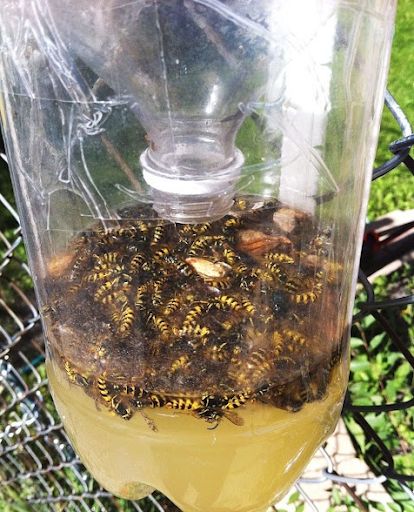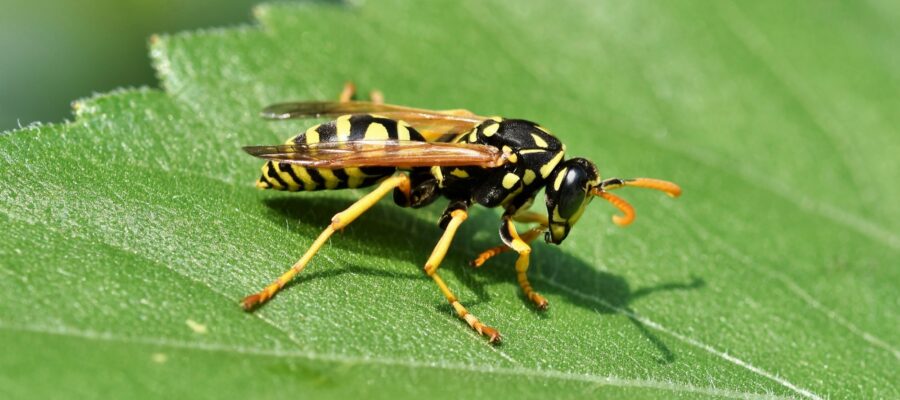Content
When we talk about natural wasp traps, we are usually talking about the inverted bottle model. Here are the steps to follow…
Inverted bottle wasp trap
Take an empty plastic mineral water bottle and remove its cap. With a cutter, cut it about 15 cm below the neck to make a funnel. Place a liquid bait (see below) in the bottom of the funnel to attract the wasps. Lured by the scent, they will enter but will not be able to exit and will drown. Finally, fit the top part – neck down to form the trap – into the bottom part. If you want to hang the trap, warm up the tip of a knitting needle, make 2 or 4 holes on the top side of the rest of the bottle and thread string through them.

Sweet or protein bait
Sweet baits are very palatable but indiscriminately attract and kill wasps and bees. Therefore, they should only be used if there are no bees or hives nearby. Make your bait with beer and syrup, beer and fruit juice (preferably apple) or beer and jam. You can also place sugar with lemon juice, vinegar or lemonade. The wasp is omnivorous with a frankly carnivorous tendency. Therefore, if you are concerned about capturing bees, use a protein bait. At the bottom of the trap, place a piece of raw red meat, raw fish (sardines…) or shrimp shells. Add a little water to prevent the food from drying out. After a barbecue, you can also collect the fat from the meats or fish and dilute them in water.
Location of the wasp trap
The most strategic location is the dining area. Place one or two traps about 3 meters from the dining table: either placed on the ground or hung if the wind is likely to blow them over; preferably in full sun to attract more wasps. To protect a fruit tree, hang one or two traps directly in the tree. If necessary, place them near the compost pile as well. If you have spotted a wasp nest on your property, place the trap just below their entrance: the wasps start their flight by descending and will be trapped when they try to ascend. Operate while they are resting: at dusk or at night.
Empty a trap
After a while, your trap will become saturated with wasps and will no longer work. At this point, don’t empty it directly because you’ll risk getting stung if all the trapped wasps aren’t dead. Add water and wait a few hours to make sure they are no longer a stinging hazard. Then empty the trap into the toilet or bury the dead wasps, as leaving their corpses exposed could attract the rest of the swarm.
Trap wasps sparingly
Dreaded insect predators, wasps rid the garden of flies, various larvae, mosquitoes or caterpillars. They are part of the biodiversity and as such, have their place in the food chain. To preserve the auxiliary of our gardens, be sure to use the traps with consideration!
